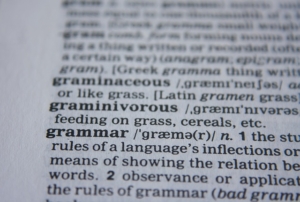Italian grammar is very rich and might seem complex. How can you avoid feeling overwhelmed? The best thing to do is to start with the basics. In this article you’ll discover:
- What’s the best way to learn Italian grammar and what to learn first;
- Italian pronouns;
- Italian possessive adjectives;
- Italian prepositions and their use;
- Italian most frequent adverbs;
- Italian verbs and their conjugation;
- How to learn Italian with Global General.
If you want to learn the basics of Italian grammar, read on!
What Is the Most Efficient Way to Learn Italian Grammar?
Italian grammar is pretty complex, so especially at the beginning, it’s important to follow a few steps so that you won’t get confused. There are a great number of ways to learn Italian and its grammar. However, the best way to learn Italian grammar is through grammar books and professional online courses. Following structured explanations will guarantee you a simple understanding of the Italian grammar rules.
You also need to practice: exercises related to each grammar topic are a great way to put yourself to the test and verify that you actually understood the rule. Many books and websites like GlobalExam offer both of these methods.
In the following sections we’ll discuss the very basics of the Italian grammar: read on to learn more!

#1 Italian Pronouns
In Italian, just like in English, there are many pronouns. Which is why learning Italian vocabulary and expressions is a perfect way to improve your grammar at the same time by allowing you to learn all of the necessary words, such as pronouns.
What are pronouns exactly? Pronouns are the elements of the sentence that indicate or replace the person, animal or object, that is doing an action, or receiving an action.
Subject Pronouns
| Italian | English |
|---|---|
| io sono | I am |
| tu sei | you are |
| lei/lui è | she/he is |
| noi siamo | we are |
| voi siete | you are |
| loro sono | they are |
Subject pronouns are almost always implied.
Example: Sono italiano (I am Italian)
Object Pronouns
The object pronouns must always be used in Italian. The most common object pronouns in Italian are the direct object pronouns (pronomi di complemento diretto) and indirect object pronouns (pronomi di complemento indiretto). ther.
Direct Object Pronouns
| Italian | English |
|---|---|
| mi | me |
| ti | you |
| la/lo | her/him |
| ci | us |
| vi | you |
| le/li | them (feminine/masculine) |
Direct pronouns in Italian are always expressed. They answer the questions “Chi? che cosa?” (whom? what?)”
Indirect Object Pronouns
| Italian | English |
|---|---|
| mi | to me |
| ti | to you |
| le/gli | to her/to him |
| ci | to us |
| vi | to you |
| loro | to them |
Indirect pronouns in Italian are always expressed. They answer the questions “A chi? A che cosa?” (to whom? to what?)”
#2 Italian Possessive Adjectives
In Italian, the possessive adjective you changes according to two things: whether you’re talking about a single thing, or more than one thing (single vs plural) and whether you’re talking about a masculine or feminine noun. Here are all your options:
| PERSONAL PRONOUN (English) | MASCULINE SINGULAR (Italian) | FEMININE SINGULAR (Italian) | MASCULINE PLURAL (Italian) | FEMININE PLURAL (Italian) |
|---|---|---|---|---|
| my | mio | mia | miei | mie |
| your (of tu) | tuo | tua | tuoi | tue |
| his, her, its, of Lei | suo | sua | suoi | sue |
| our | nostro | nostra | nostri | nostre |
| your (of voi) | vostro | vostra | vostri | vostre |
| their | loro | loro | loro | loro |
Italian possessive adjectives agree in gender (masculine/feminine) and in number (singular/plural) with the noun they refer to.
#3 Italian Prepositions and Their Use
A preposition is a small word that connects two words or sentences that have a specific relationship to each other. When they are not followed by an article, Italian prepositions are called “simple prepositions”. There are nine of them: di, a, da, in, con, su, per, tra, fra. Prepositions are a great way to learn and improve your Italian pronunciation due to the fact that they are so versatile!
DI prepostion
“Di” is the most versatile preposition of all. It may have a lot of different functions within a sentence:
- Specification
- Naming
- Fault
- Penalty
- Origin
- Subject
- Agent
- Comparison
Here a few examples: Origin: Sono di Milano (I come from Milan); Subject: Parliamo del tuo libro (Let’s talk about your book). In the second example “di” becomes “del”. Indeed, simple prepositions can be combined with an article. DI + il = del; DI + la = della; DI + gli = degli; DI + le = delle. This rule also applies to “a, da, in, su”.
A prepostion
Another one of the simple Italian prepositions is “a”, which becomes ad when used before a word that starts with a vowel. It may be used in a sentence for many purposes:
- Indirect object
- Being in a place
- Specific time
Example: Specific time: L’università inizia a Ottobre (University begins in October)
DA prepostion
“Da” is another Italian preposition with a lot of different functions. In a sentence, the most important are:
- Going from a place
- Going to someone
- Being at someone’s place
- Agent and cause
- Price
- Purpose
Here a few examples: Going from a place: La corsa parte da Milano (The race starts in Milan)
IN prepostion
This preposition is mostly used for the following functions:
- Being in a place
- Period of time
Examples: Being in a place: Casa mia è in piazza della Libertà (My home is in Piazza della Libertà); Period of time: Posso essere lì in cinque minuti (I can be there in five minutes)
CON prepostion
“Con” is basically the same as the English preposition “with”:
- Company
- An instrument or tool that you use to do something
A couple of examples: Company: Vengo con te (I’m coming with you); Instrument: Ho pagato con la carta di credito (I paid it with the credit card)
SU prepostion
The Italian preposition “su” means “on” “onto” or over. It is used to indicate:
- That something is placed above something else
- The subject of a topic
Example: Subject of a topic: È un film sul movimento hippie (That’s a movie on the hippie movement)
PER prepostion
In most cases, per can be translated to the English preposition “for.” It indicates:
- A reason for something
- Time duration
A few examples: A reason for something: Sono venuto qui per la mia famiglia (I came here for my family); Time duration: Ha continuato a parlare per tre ore (He kept talking for three hours)
TRA and FRA prepostion
The Italian prepositions “tra” and “fra” are synonyms and you can use either one or the other. They mean “between” or “among” and are both used to indicate:
- Something that is located between two things or places
- An alternative (between two or more things)
A couple of examples: Something that is located between two things or places: La scuola è tra l’ospedale e il comune (The school is between the hospital and the city hall); An alternative: Devi scegliere fra me e lei (You have to choose between me and her)

#4 Most Frequent Italian Adverbs
What are the most frequent Italian adverbs? Well, let’s start with an easier question: what’s an adverb? An adverb is an element in a sentence that can’t be inflected and which modifies the meaning of another element. There are many kinds of adverbs:
- Adverbs of time: oggi (today), ieri (yesterday), domani (tomorrow), Presto (soon), tardi (late), prima (before), dopo (after), and so on
- Adverbs of Frequency: mai (never), raramente (rarely), spesso (often), sempre (always), a volte (sometimes), and so on.
- Adverbs of Place: qui (here), lì/là (there), dentro (inside), fuori (outside), su/sopra (up/above), giù/sotto (down/below), davanti (in front of), dietro (behind), etc.
- Adverbs of Manner: velocemente (quickly), lentamente (slowly), facilmente (easily), perfettamente (perfectly), bene (well), male (badly), improvvisamente (suddenly), and so on.
- Adverbs of Degree or Addition: molto (much), poco (little), abbastanza (quite), meno (less), meglio (better), peggio (worse), etc.
- Question Adverbs: dove (where), come (how), perché (why), quando (when), chi (who).
- Adverbs of Affirmation, Negation, and Doubt: sì (yes), no (no), certo (of course), non (not), forse (maybe), probabilmente (probably), etc.
#5 Italian Verbs and Their Conjugation
Italian verbs are divided into three groups: -ARE (mangiare, andare, trovare), -ERE (bere, vedere, correre), -IRE (dormire, preferire, schernire). Each group has its own endings for each tense. The modes and tenses are the same for every group. The following chart can help you memorize the conjugation of some tense of the indicative mode. Let’s see the first group:
Verbs in -ARE
Example: AMARE (“To love”)
| Personal pronoun | Present | Absolute Past | Imperfect | Future |
|---|---|---|---|---|
| io | amo | amai | amavo | amerò |
| tu | ami | amasti | amavi | amerai |
| lui/lei | ama | amò | amava | amerà |
| noi | amiamo | amammo | amavamo | ameremo |
| voi | amate | amaste | amavate | amerete |
| loro | amano | amarono | amavano | ameranno |
If you have any doubts on how to conjugate Italian verbs, you can use some online tools such as Verbi Italiani.
Learn and Improve Your Italian Online With Global General
If you are looking for an Italian online course, the best option is Global General! This e-learning course created by GlobalExam is dedicated to beginner and intermediate students of all ages, from the A1 to the B2 level. We offer 5 languages: English, Spanish, French, Italian and German. Every level of every language is developed according to the CEFR standards. Our method offers an all-inclusive approach which will help you practice all of your skills: writing, reading, listening, speaking! Here’s what you’ll find on our e-learning platform:
- Plenty of flashcards to train your memory and help you learn new useful words;
- Simulations to help you practice in real context, for all the competencies;
- A “did you know” section to help you improve your knowledge of the language;
- 5000 detailed corrections;
- Personalised feedback from our coaches;
- Validation of the acquired competencies every 5 simulations;
- 150 hours of unique content and 500 audio tracks.
With Global General you can easily learn Italian from scratch anywhere and whenever you want!

